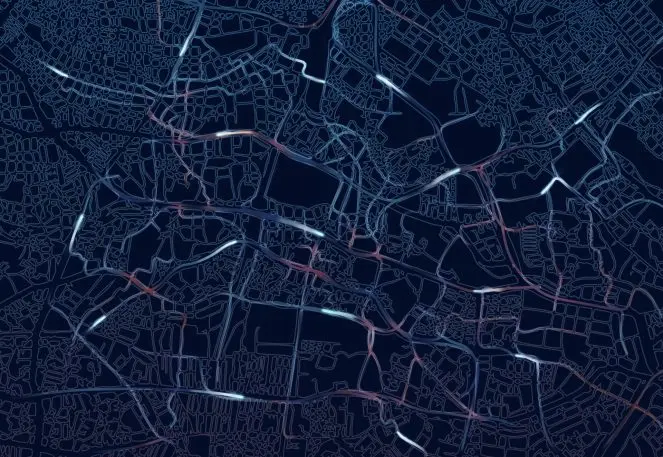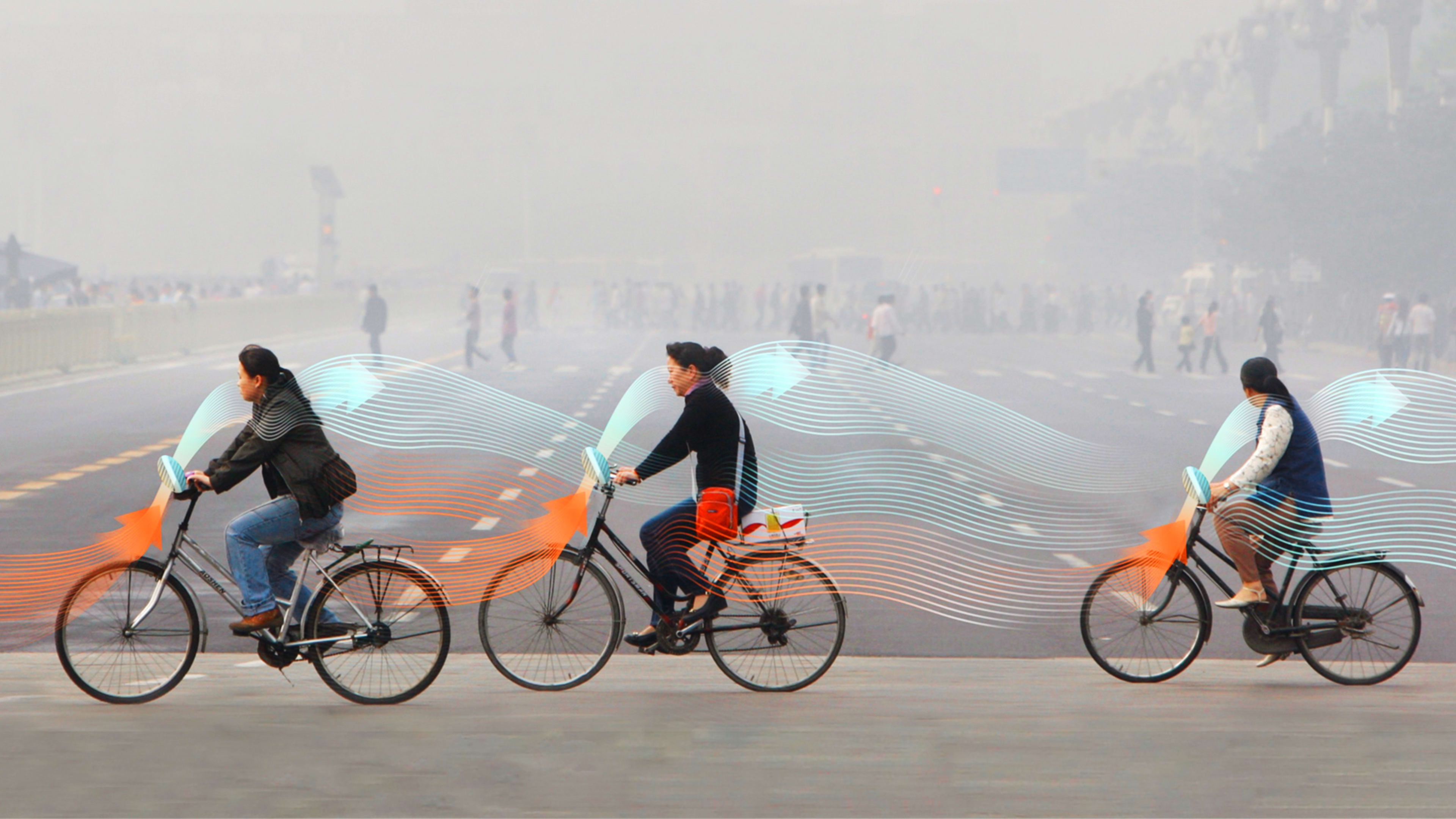Riding a bike in a smoggy city–and sucking in exhaust from the tailpipes of the cars in front of you–can undo the benefits of exercise. In Beijing, artist Daan Roosegaarde is beginning to imagine one potential solution: a bike that could pull in dirty air, filter it, and release clean air.
The concept is one part of Roosegaarde’s larger Smog Free Project. At TED 2017, Roosegaarde, who works in both the Netherlands and China, outlined the project so far, including a seven-meter-tall tower designed to sit in parks or playgrounds and purify surrounding air (though there are some questions about how well this works though the studio says that those conclusions are “not based on validated measurements” and that it will have new numbers available soon). Roosegaarde has also turned the black soot from Beijing air into smog jewelry. In theory, the new bikes will work in a similar way to the tower.

He envisions that the design, which is still in development, could be added to China’s rapidly growing network of bike shares. At least half a million shared bikes are now in use in Beijing. One bike-share company alone, Mobike, has more than 10 million users in 21 cities.
“If we can update those bikes with this kind of thing, then you can create an impact on the average pollution, and then it becomes fascinating,” Roosegaarde says. “It should be more than a one-off.”
The bikes will likely become part of a program–that includes the Smog Free Towers and other yet-to-be-designed smog-sucking technology–that the designer is pitching to polluted cities as a way to temporarily purify pockets of air while cities work on larger reforms.
“It will always be connected with big programs of government and green technology and electric cars,” Roosegaarde says. “They do top-down, we do bottom-up, and we meet in the middle.”
Recognize your brand's excellence by applying to this year's Brands That Matters Awards before the early-rate deadline, May 3.
